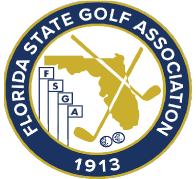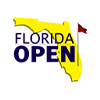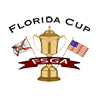Below is a collection of Local Rules that may have been used in the past that may assist you in the proper wording of your Notice to Players. They have been grouped together by topic. If you would like to add a Local Rule that you have used in the past, please forward the information to championships@fsga.org for inclusion in the library.
General
Transportation (Carts Not Permitted): Players must not ride on any form of transportation during a stipulated round unless authorized by the Committee. Example from FJT event: "All competitors must walk during the stipulated round. Exception: Committee officials reserve the right to transport players. Players may be transported by a shuttle cart or a spectator cart between the play of holes: #18 - #1 and #9 - #10."
Doubt as to Procedure: In stroke play, if a competitor is doubtful of his rights or the correct procedure during the play of a hole, he may, without penalty, complete the hole with two balls under Rule 20.1c(3). The competitor must report the facts of the situation to the Committee before returning his score card. If he fails to do so, he is disqualified.
Play-off: A play-off to determine the overall Champion in each division will begin immediately upon completion of the final round of play on a hole(s) designated by The Committee. It is the responsibility of the player to be present for any play-off.
Practice Between Holes Not Permitted: Between the play of two holes, a player must not make any practice stroke on or near the putting green of the hole last played and must not test the surface of the putting green of the hole last played by rolling a ball.
Scorecards: Return scorecards immediately after completion of play to the scoring area located ________ (specify area).
Abnormal Ground Conditions
Cut Wood Stacked for Removal: Any material stacked for removal, including cut and stacked tree limbs are ground under repair even if not marked. Example: The pile of wood on hole number _____ (specify area) is ground under repair. Relief is available under Rule 16.1.
Edging Grooves Near Putting Greens: The edging grooves around the aprons or fringes of putting greens are ground under repair. If a player’s ball lies in or touches a groove or a groove interferes with the area of intended swing:
- Ball in General Area: The player may take free relief under Rule 16.1b (drop a ball).
- Ball on Putting Green: The player may take free relief under Rule 16.1d (place a ball)
Flower Beds (No Play Zones): All ornamental flower beds throughout the course are NO PLAY ZONES. Relief is mandatory under Rule 16.1. If the flower bed is in a penalty area, the player must proceed under Rule 17 incurring a one stoke penalty.
Ground Under Repair on Putting Green: If the ball lies on the putting green, the player may lift the ball and place it, without penalty, at the nearest point of relief that is not in a penalty area or, if complete relief is impossible, at the nearest position to where it lay that affords maximum available relief from the condition, but not nearer the hole and not in a penalty area. The nearest point of relief or maximum available relief may be off the putting green.
Ground Under Repair, No Play Zone: The _____________(defined by ____) is ground under repair from which play is prohibited. If a player’s ball lies in the area, or if it interferes with the player’s stance or the area of his intended swing, the player must take relief under Rule 16.1.
Course Conditions (Extreme Wetness, Poor Conditions and Protection of Course)
Aeration Holes: If a player's ball lies in or touches an aeration hole:
(a) Ball in the General Area: The player may take relief under Rule 16.1b by dropping a ball at the nearest point of complete relief in the general area.
(b) Ball on Putting Green: The player may take relief under Rule 16.1d by placing a ball at the nearest point of relief either on the putting green or in the general area.
Lift, Clean and Place (Preferred Lies): When a player's ball lies in a part of the general area cut to fairway height or less [Or identify a specific area such as 'on the fairway of the 6th hole'], the player may take free relief once by placing the original ball, or another ball, and playing it within one club-length [scorecard length, 6 inches] from the spot where the original ball lie, no closer to the hole, and in the general area.
Seams of Cut Turf (Sodded Areas): If a player's ball lies in or touches a seam of cut turf or a seam interferes with the player's area of intended swing:
(a) Ball in General Area: The player may drop a ball under Rule 16.1b
(b) Ball on Putting Green: The player may place a ball under Rule 16.1d
Interference does not exist if the seam only interferes with the player's stance.
College Tournaments
Two Coaches Permitted to Give Advice: See full text of Model Local Rule H-2 - Committee may allow (one/two) advice givers
Dropping Zones
I. Penalty Area: If a ball is in or it is known or virtually certain that a ball that has not been found is in the penalty area (specify location), the player may: (i) proceed under Rule 17; or (ii) as an additional option, drop a ball, under penalty of one stroke, in the dropping zone located (specify location).
Environmentally-Sensitive Areas - No Play Zones
A. In Ground Under Repair: If a ball is in an ESA defined as ground under repair or there is interference with a player's stance or area of intended swing, a ball must be dropped in accordance with Rule 16.1. If it is known or virtually certain that a ball that has not been found is in an ESA defined as ground under repair, the player may take relief, without penalty, as prescribed in Rule 16.1.
B. In a Penalty Area: If the ball is found in or if it is known or virtually certain that a ball that has not been found is in an ESA defined as a penalty area, the player must, under penalty of one stroke, proceed under Rule 17.
Note: If a ball comes to rest or, dropped in accordance with Rule 17, rolls into a position where the ESA interferes with the player’s stance or the area of his intended swing, the player must take relief as provided in Clause III of this Local Rule.
C. Out of Bounds: If a ball is in an ESA defined as out of bounds, the player must play a ball, under penalty of one stroke, as nearly as possible at the spot from which the original ball was last played (see Rule 14.6).
Obstructions and Integral Parts of the Course
Artificially Surfaced Cart Paths and Roads:
I. Free Relief Not Permitted: Artificial surfaces and sides of roads and paths are integral objects.
II. Free Relief Permitted: Relief may be obtained from concrete, blacktop and gravel paths under the following conditions: areas adjacent to the cart paths if the lie, stance, or swing is affected by loose gravel, areas worn by cart traffic, areas not healed by construction or washed out by weather.
Drain Caps in Bunkers: Drainage caps in bunkers are immovable obstructions. Relief is available under Rule 16.1.
Immovable Obstructions Close to Putting Green: Relief is available only when the ball and the immovable obstruction lie in a closely-mown area, the ball lies in the general area, and an immovable obstruction on or within two club-lengths of the putting green and within two club-lengths of the ball intervenes on the line of play between the ball and the hole. (Drop ball within one club-length of complete relief)
Landscape Areas Enclosed By Cart Path: Landscape areas enclosed by cart paths are deemed to be part of the same obstruction. All other flowerbeds/landscape areas are part of the general area and relief is not permitted.
Railroad Ties: Railroad ties bordering artificially surfaced areas are obstructions. All other railroad ties are an integral object.
Stacked Rock Fences: The stacked rock walls or fences are integral objects, not obstructions. Free relief is NOT permitted.
Staked Trees/ Protection of Young Trees: Protection of young trees identified by ______. If such a tree interferes with a player’s stance or the area of his intended swing, the ball must be lifted, without penalty, and dropped in accordance with the procedure prescribed in Rule 16.1 (Immovable Obstruction). If the ball lies in a penalty area, the player must lift and drop the ball in accordance with Rule 17, except that the nearest point of relief must be in the penalty area and the ball must be dropped in the penalty area or the player may proceed under Rule 17. The ball may be cleaned when lifted under this Local Rule. Exception: A player may not obtain relief under this Local Rule if (a) interference by anything other than such a tree makes the stroke clearly impracticable or (b) interference by such a tree would occur only through use of a clearly unreasonable stroke or an unnecessarily abnormal stance, swing or direction of play.
Temporary Immovable Obstruction: The starter's and scoring tents near #1 and #10 tees are temporary immovable obstructions.
Tree Bases with Mulch: No free relief for interference from stacked or mounded mulch at the base of trees. However, the mulch is a loose impediment.
Crushed Rock/Shell Areas(or Paths): The areas of crushed _____ (define area/texture) are integral objects. NO FREE RELIEF. Players may lightly ground their club and remove loose impediments.
Out of Bounds
Penalty Areas: The homeowner's side of a red penalty area is out of bounds.
Practice Range: The practice range is out of bounds/NOT out of bounds.
Public Road Defined as Out of Bounds Divides Course: A ball which crosses a public road defined as out of bounds and comes to rest beyond that road is out of bounds, even though it may lie on another part of the course.
Penalty Area Coincides with Out of Bounds: When a penalty area coincides with the out of bounds line the Local Rule B-2 is in effect allowing an additional relief option on the opposite side of a red penalty area equidistant to the reference point.
Penalty Areas
Penalty Areas: When a red or yellow penalty is defined on only one side, it is deemed to extend to infinity. When a penalty area is bounded by out of bounds, the edge extends to and coincides with the out of bounds line.
back to tourn. chairman's corner





